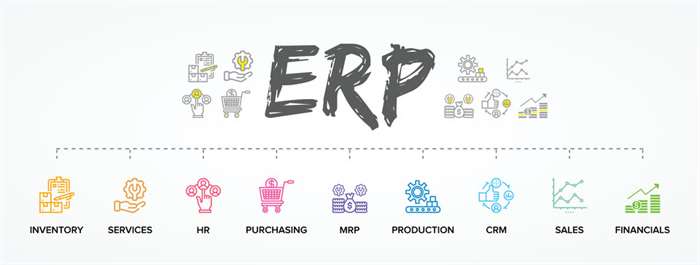\(\bX \setminus \bY\) is the set that results from removing the members of \(\bY\) from \(\bX\). It Increases knowledge of the process by helping everyone to learn more about the factors at work and how they relate. It Helps us to determine the root causes of a problem or quality using a structured approach. To Relate the interactions of the system among the factors affecting a particular process or effect.
Note that the mask constraint relates to the effects and not the causes like the other constraints. Literature on the theory and practice of causal mapping includes a few canonical works as well as book-length interdisciplinary overviews, and guides to particular approaches. A causal map can be defined as a network consisting of links or arcs between nodes or factors, such that a link between C and E means, in some sense, that someone believes or claims C has or had some causal influence on E. At a practical level, a cause is whatever is responsible for, or explains, an effect – a factor “whose presence makes a critical difference to the occurrence of an outcome”.
۷ Interventions
Stern expands this approach to allow for agents who distribute their credence over multiple causal models. Hitchcock shows how the distinction between interventions and counterfactuals, discussed in more detail in Section 4.10below, can be used to deflect a number of alleged counterexamples to CDT. The discussion so far has focused on the case where there are no latent common causes of the variables in \(\bV\), and the error variables \(U_i\) can be expected to be probabilistically independent. As we noted in Section 2.3above, we represent a latent common cause with a double-headed arrow.
- Is not necessary to change y, because a change in y could be caused by something implicit in the error term .
- For example, in his paper “Counterfactual Dependence and Time’s Arrow,” Lewis sought to account for the time-directedness of counterfactual dependence in terms of the semantics of the counterfactual conditional.
- In this case, we would not expect \(U_i\) and \(U_j\) to be probabilistically independent, and the theorem of Pearl and Verma would not apply.
- A full grasp of the concept of conditionals is important to understanding the literature on causality.
- One viewpoint on this question is that cause and effect are of one and the same kind of entity, with causality an asymmetric relation between them.
For example, the acyclic directed mixed graph in Figure 9represents a latent common cause of X and Z. More generally, we can use an ADMG like Figure 9 to represent that the error variables for X and Z are not probabilistically independent. If we have a set of variables \(\bV\) and know the cause-effect graph probability distribution P on \(\bV\), what can we infer about the causal structure on \(\bV\)? This epistemological question is closely related to the metaphysical question of whether it is possible toreduce causation to probability (as, e.g., Reichenbach 1956 and Suppes 1970 proposed).
Cause and Effect Chart Examples
However, we do not need to assume that the process is deterministic; it may be the case that each person only has a certain probability of falling into one of these categories. Then the correct DAG on \(\bV\) can be uniquely determined by the induced probability distribution P on \(\bV\). In Figure 7, MC entails that X and Z will be unconditionally independent, but not that they will be independent conditional onY.
On the basis of the cause and effect diagram, one can list the fields that are likely to be important during the diagnosis or design phase. The graph can always be rearranged so there is only one node between any input and any output. The mask constraint states that if effect 1 is true then effect 2 is false.
About Fishbone Diagram
In this case, the causal relationship among the variables in \(\bV\) would not be appropriately represented by a DAG, but would require an acyclic directed mixed graph with a double-headed arrow connecting \(V_i\) and \(V_j\). We will discuss this kind of case in more detail in Section 4.6below. The logic of structural counterfactuals has been developed by Galles and Pearl , Halpern , Briggs , and Zhang .

In the glossary we gather the main specialized terms that are frequently used in the working process. All meanings are written according to their https://www.globalcloudteam.com/ generally accepted international interpretation. For convenience, you can use the search bar to simplify and speed up the search process.
۳ Graphs
A scatter plot can never prove cause and effect, but they can be an effective way to show a pre-determined causal relationship if you have determined that one exists. You can also use cause and effect tools to brainstorm and decipher positive results. For example, you might want to understand how a project exceeded its expectations by delivering early and under budget. Cause and effect can be used to understand what actions/steps were made that resulted in a positive outcome. Once fully understood those actions can be duplicated into other similar areas of the business to capitalize on best practice.

These are further examples of the idea that a “cause” in general in the context of Aristotle’s usage is an “explanation”. Aristotle identified four kinds of answer or explanatory mode to various “Why?” questions. He thought that, for any given topic, all four kinds of explanatory mode were important, each in its own right. In ordinary language, the word ’cause’ has a variety of meanings, the most common of which refers to efficient causation, which is the topic of the present article. In the discussion of history, events are sometimes considered as if in some way being agents that can then bring about other historical events.
Causal map
That is, the probability of sufficiency is the probability that if the cause were added to a situation in which it and the effect was absent, it would have resulted in the effect occurring. The probability of sufficiency is closely related to the quantity that Sheps called the relative difference, and that Cheng calls the causal power. Cheng’s terminology reflects the idea that the probability of sufficiency of C for E is the power of C to bring about E in cases where E is absent. Using the probabilities from the previous example, the probability of sufficiency of asbestos for lung cancer would be between .05 (5/94) and .12 (11/94).
Cause-effect graph comes under the black box testing technique which underlines the relationship between a given result and all the factors affecting the result. That is, if we can find an appropriate conditioning set \(\bZ\), the probability resulting from an intervention on X will be the same as the conditional probability corresponding to an observation ofX. While there are specific assumptions behind these results, they are nonetheless remarkable.
Other types of Testing
Nevertheless, it is within the scope of ordinary language to say that it is essential to a triangle that it has three sides. In general, a process has many causes, which are also said to be causal factors for it, and all lie in its past. An effect can in turn be a cause of, or causal factor for, many other effects, which all lie in its future. Some writers have held that causality is metaphysically prior to notions of time and space. In software testing, a cause–effect graph is a directed graph that maps a set of causes to a set of effects. The causes may be thought of as the input to the program, and the effects may be thought of as the output.
برچسب ها: